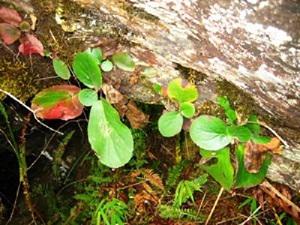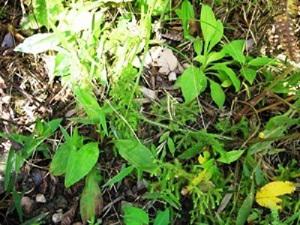Dhananjaya Lamichhane
The project aims to find out domestication potentials of valuable medicinal and aromatic plants for resource conservation and livelihood improvement of local people.

Naturally growing medicinal plant-Berginia ciliata.
Medicinal and aromatic plants (MAPs) are major components of non-timber forest products (NTFPs) in Nepal, and their contribution is about five percent in Nepal's gross domestic product. Moreover, NTFPs including MAPs provide up to 50% of family income in certain rural areas. The importance of MAPs in contribution to the rural economy and national income of Nepal has been recognized by a number of policy documents and programs.

Naturally growing medicinal plant -Swertia chirata.
The Forestry Sector Policy (2000) has identified 30 commercially important MAPs, out of which 10 are most potential for cultivation in community forests (CFs) and private lands. Out of them, two most important species will be identified and studied under this project in natural condition of CFs, and in a nursery and a demonstration plot which will produce a substantial effect in managing and promoting the prioritized MAPs for uplifting the livelihoods of poor people in the rural areas. The performance of the selected species on survival rate, growth, health, quality and quantity of useful parts will be assessed in both the conditions.
The local people will be involved in the experiments so that they can observe and learn about the conservation in their forests and cultivation outside forest of these important MAPs. Similarly, the existing traditional processing methods and use of tools, and the ways of their improvement will be identified. Status of market demand and supply and marketing opportunities will be explored for commercialization.
The results from the project will provide the rural people with scientific knowledge of cultivation of the selected species and awareness about in situ conservation of them in their CFs. Local people and other stakeholders will for the practical application of the results through in situ conservation or ex situ cultivation of the MAPs for their benefits. A community nursery of MAPs, a demonstration plot of MAPs plantation, increased awareness and knowledge of people on MAPs, and the forest management with promotion of valuable of MAPs grown in the forests will be the key outcomes of the project. Results will be disseminated by means of workshops, articles, posters and presentation in national and international seminars as well.